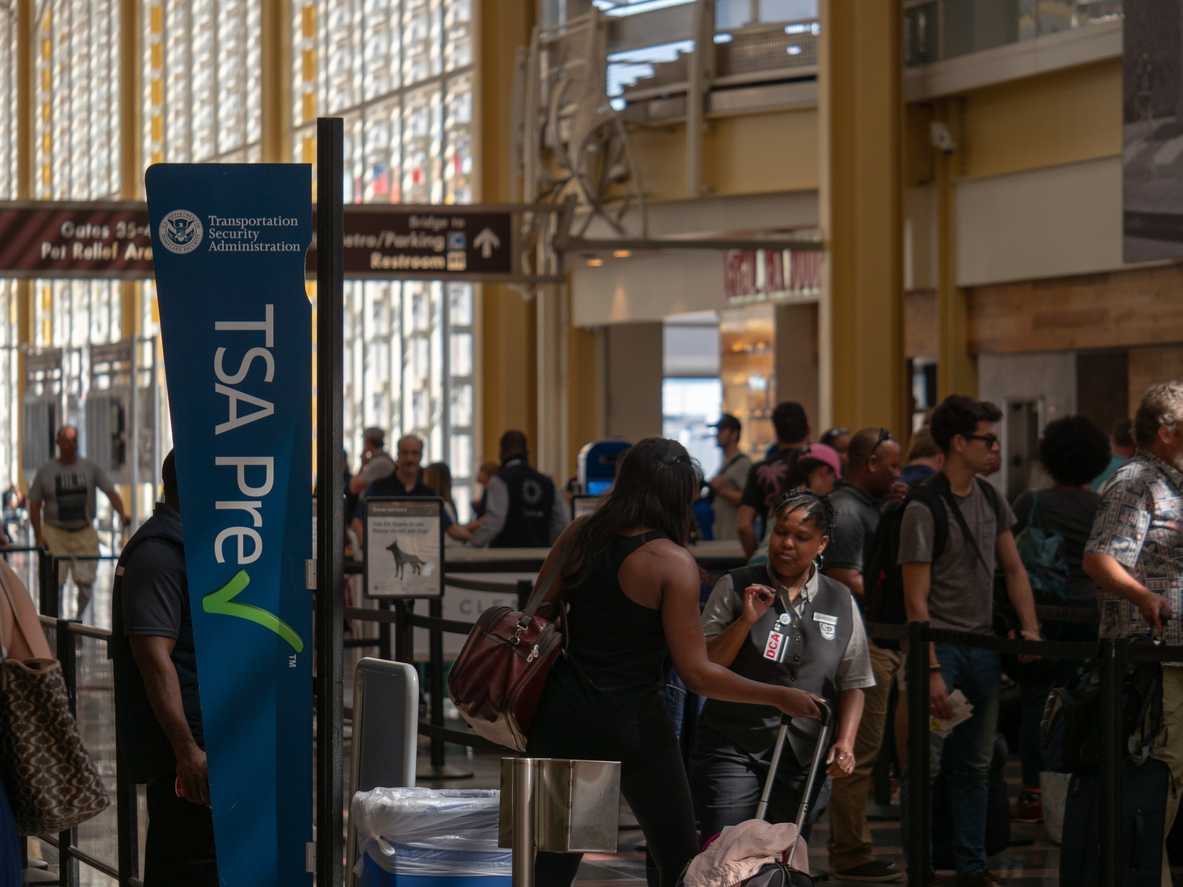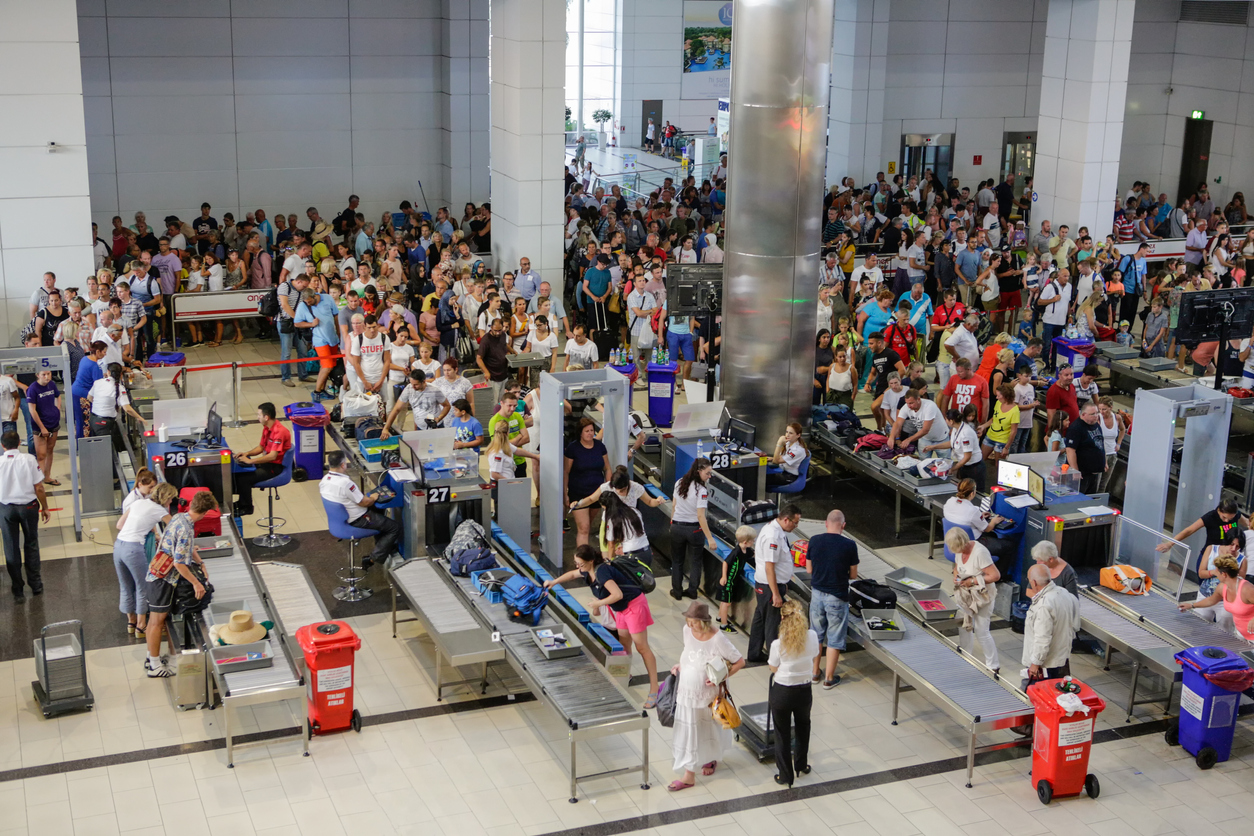
Global Entry and TSA Precheck are government programs created to speed up the security lines at airports, but which one is right for you?
By Heather Newgen
Every traveler knows how frustrating it can be standing in long lines at the airport, quickly removing articles of clothing to go through security and pretty much unpacking your carry-on to walk through the X-ray machines. While the process is designed to keep passengers safe, it can be a hassle. So Global Entry and TSA Precheck were implemented to help low-risk travelers get through security and customs faster, but what's the difference? For one, the programs are run by different agencies. Homeland Security is in charge of TSA Precheck while the U.S. Customs and Border Protection runs Global Entry.
Here's a breakdown of each program, plus a few tips to help you decide which one is better for you.
 Antalya, Turkey - September 10, 2016: Security and passport control at Antalya International Airport, Turkey.
Antalya, Turkey - September 10, 2016: Security and passport control at Antalya International Airport, Turkey.
TSA Precheck
With TSA Precheck, travelers can keep their shoes, belts and jackets on while going through the security checkpoint. In addition, they don't need to remove laptops or liquids from their bags. Many airports have a separate line specifically for TSA Precheck members to speed things up that much more. TSA Precheck is great for domestic travelers because you don't need a passport, and there is no age restriction to apply. However, kids 12 and younger traveling with an eligible parent or guardian can accompanying them through the expedited security process.
Application: You can apply online, but need documentation that shows you're a U.S. citizen like a driver's license or birth certificate. In-person appointments are required, as are background checks, and fingerprinting. Once approved you will be given a Known Traveler Number (KTN), which you add to every flight you book
Price: $85 for a five- year membership.
Pros: Besides the advantages mentioned above, TSA Precheck is quicker and easier to apply for. You can get approved in two to three weeks, whereas it can take months to go through the Global Entry process. There's 300-400 enrollment centers for your in-person interview, as opposed to Global Entry where you've only got 90-100 and are mostly at the airport. TSA Precheck on the other hand offers more locations like in Staples and shopping centers.
Cons: If you did ever travel abroad, you'd be stuck in mobs of people clearing customs when returning to the U.S.
Global Entry
Global Entry gives you all the benefits of TSA Precheck and then some. For anyone who travels abroad Global Entry is the way to go because it allows you to skip the crowds at customs when returning from an international trip. You can head straight to a kiosk, get your receipt and make your way over to a customs officer. Benefits apply to air, land, and sea travel for those traveling internationally and re-entering the U.S.
Price: $100.00 for a five- year membership.
Application: You can apply online,
Pros of Global Entry
Significantly reduced wait time at security checkpoints and customs, no taking off shoes or clothing to go through the X-ray machines and liquids and electronics can stay in carry on.
Cons of Global Entry
The application process isn't quite as smooth as TSA Precheck. People literally wait months and months to get an interview appointment. In addition, unlike TSA Precheck, kids can't go through Global Entry with an accompanied parent or guardian. The Customs and Border Protection (CBP) website states:
“Regardless of your age, you must create a Global Online Enrollment System account, pay a $100 non-refundable application fee, and schedule an interview at a Global Entry Enrollment Center. If you are under the age of 18, a parent or legal guardian must be present at time of interview.”
How to apply
Credit cards that reimburse the TSA precheck or global entry application fee
Some credit cards will reimburse the application fee for TSA precheck or global entry. See below to find out if your card makes the list.
- Bank of America Premium Rewards Visa credit card
- The Business Platinum Card from American Express
- Capital One Venture Rewards Credit Card
- Citi / AAdvantage Executive World Elite Mastercard
- Chase Sapphire Reserve
- IHG Rewards Club Premier Credit Card
- Mastercard Black Card
- Mastercard Gold Card
- The Platinum Card from American Express
- SunTrust Travel Rewards Credit Card
- U.S. Bank FlexPerks Gold American Express Card
